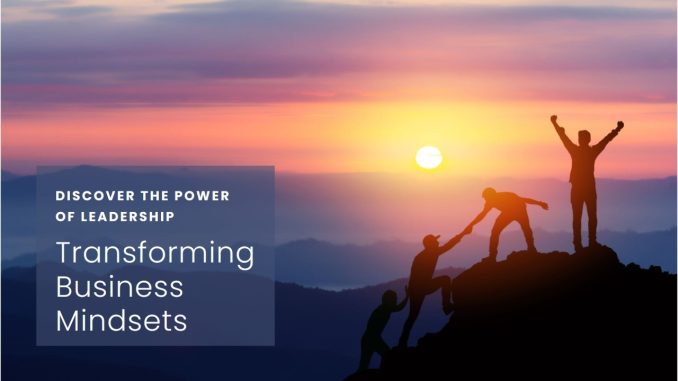
Transformation in business rarely begins with a new product, a rebrand, or a strategic pivot. More often, it starts with a shift in mindset—a fundamental change in how leaders and teams perceive challenges, opportunities, and their own potential. This shift isn’t about adopting a trendy philosophy or chasing the latest management fad. It’s about rethinking the assumptions that guide decisions, redefining what success looks like, and embracing a more adaptive, growth-oriented approach to leadership and culture. When this shift takes root, it doesn’t just change how a business operates—it changes how it evolves.
One of the most powerful mindset shifts is moving from a fixed to a growth orientation. In a fixed mindset, people believe that abilities and intelligence are static, which can lead to risk aversion, defensiveness, and a fear of failure. In contrast, a growth mindset views skills and capabilities as malleable, shaped by effort, feedback, and learning. When leaders adopt this perspective, they create environments where experimentation is encouraged, mistakes are seen as learning opportunities, and continuous improvement becomes part of the culture. A software company that once punished bugs might instead celebrate the process of uncovering and resolving them, turning setbacks into stepping stones.
Another transformative shift is from control to trust. Traditional management often emphasizes oversight, structure, and predictability. While these elements have their place, they can stifle creativity and autonomy if overused. Businesses that thrive in today’s fast-moving landscape recognize that trust is a more powerful lever than control. When leaders trust their teams to make decisions, take initiative, and own outcomes, they unlock a level of engagement and accountability that rigid systems can’t replicate. A marketing agency that empowers its creatives to pitch bold ideas without layers of approval may discover campaigns that resonate more deeply and perform more effectively.
The shift from scarcity to abundance thinking also plays a critical role. Scarcity mindset focuses on limitations—budget constraints, competitive threats, or resource shortages. It breeds caution and defensiveness. Abundance mindset, on the other hand, emphasizes possibility, collaboration, and long-term value. It encourages leaders to look beyond immediate constraints and invest in relationships, innovation, and shared success. A startup that chooses to partner with a competitor on a joint initiative, rather than guarding its turf, may find that the collaboration opens new markets and accelerates growth. This kind of thinking requires courage, but it often yields outsized returns.
Customer-centricity is another area where mindset makes a profound difference. Businesses that view customers as transactions tend to focus on short-term metrics—conversion rates, upsells, and retention. But those that see customers as partners in a shared journey approach service, product development, and communication differently. They listen more deeply, respond more thoughtfully, and build experiences that reflect genuine empathy. A SaaS company that shifts from selling features to solving problems may find that its customer relationships deepen, its churn rate drops, and its brand reputation strengthens. The mindset shift here is subtle but powerful: from selling to serving.
Internally, the shift from hierarchy to collaboration can transform how teams function. Traditional hierarchies often create bottlenecks and reinforce silos. But when businesses embrace flatter structures and cross-functional collaboration, they tap into a wider range of perspectives and skills. This doesn’t mean abandoning leadership—it means redefining it as facilitation rather than command. A product team that includes voices from sales, support, and engineering is more likely to build something that meets real-world needs. The mindset shift is from “who has authority” to “who has insight,” and that change can dramatically improve outcomes.
Resilience is another mindset that separates thriving businesses from those that merely survive. In uncertain times, the ability to adapt, recover, and grow stronger is essential. Resilient organizations don’t just react—they reflect, recalibrate, and recommit. They view challenges as part of the journey, not as derailments. A retail brand facing supply chain disruptions might use the moment to explore local sourcing, diversify suppliers, or rethink inventory strategies. The mindset shift here is from fragility to flexibility, and it’s what allows businesses to turn adversity into advantage.
Perhaps the most transformative mindset shift is from short-termism to long-term thinking. In a world driven by quarterly results and instant gratification, it’s easy to prioritize immediate wins over sustainable growth. But businesses that think long-term invest in people, brand equity, and innovation. They make decisions that may not pay off today but will build resilience and relevance over time. A company that chooses to invest in employee development rather than cutting costs during a downturn may emerge with a stronger, more loyal workforce. The mindset shift is from reacting to building, and it’s what creates enduring value.
Ultimately, the mindset shift that transforms businesses is not a single change—it’s a series of reorientations that shape how leaders think, how teams collaborate, and how organizations evolve. It’s about moving from rigidity to adaptability, from fear to curiosity, and from isolation to connection. These shifts don’t happen overnight, and they’re not always easy. But when they do take hold, they create a foundation for growth that’s deeper than strategy and more durable than tactics. They turn businesses into learning organisms, capable of navigating complexity and seizing opportunity with clarity and confidence. And that, more than any tool or trend, is what drives true transformation.